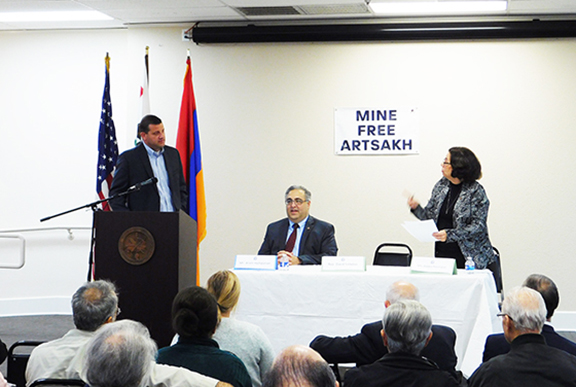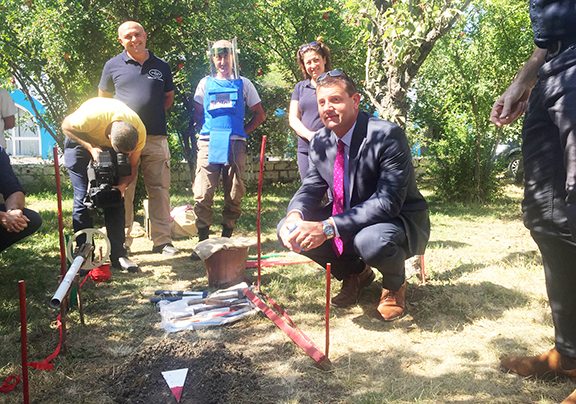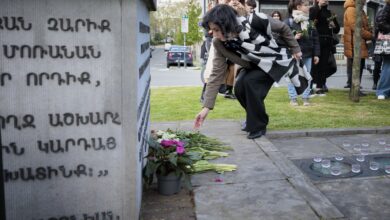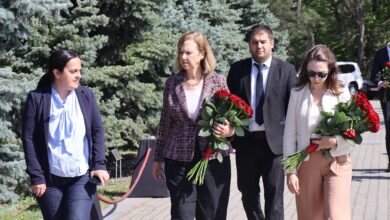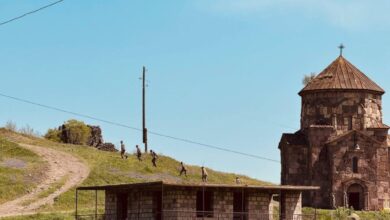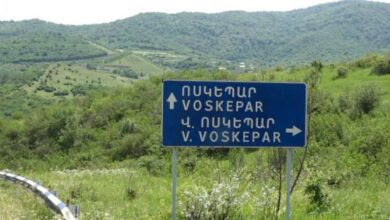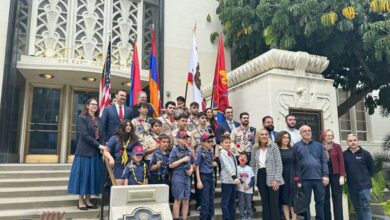Rep. Valadao discusses life-saving demining effort in Artsakh
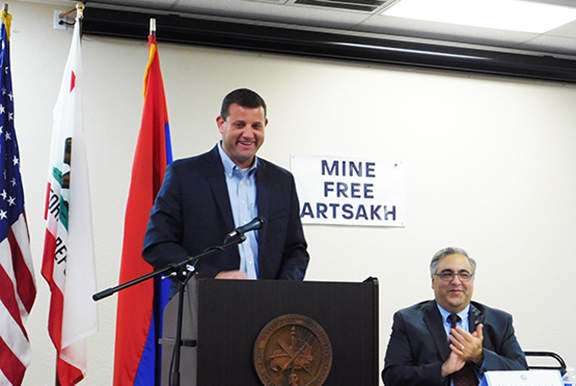
The Republic of Artsakh will be a safer place in the future, thanks to the efforts of Central Valley Congressman David Valadao (CA-21st). Earlier this year, Congress adopted an amendment introduced by Valadao calling for continued life-saving funding for the removal of land mines around the villages of Artsakh.
The Hanford-based representative who serves on the House Appropriations Committee was in Fresno to talk about the measure and his recent trip to Armenia and Artsakh during a community gathering held at the Garo and Alice Gureghian Armenian Cultural Center and sponsored by the Central California branch of the Armenian National Committee of America.
“Whenever a member of Congress would have an issue with (the amendment), the simple question was ‘what issue is there with removing land mines that are blowing up farmers,’ remarked Valadao in emphasizing the humanitarian purpose of his resolution. “I mean, who’s going to argue against that?”
The Valadao amendment will provide $1.5 million in US assistance to help the HALO Trust in its goal to eradicate mines, bombs, and other munitions that were laid during the peak of the Artsakh-Azeri conflict in the early 1990s.Since 2001 when the international humanitarian organization began its mission in Artsakh, the HALO Trust has removed over a quarter-million explosives from the countryside, thus bringing otherwise fallow land back into agricultural production. Along with the making the country safer and more productive, the de-mining operation employs hundreds of locals, who have an intimate knowledge of the landscape.
“These folks spend a lot of hours digging around a little land mine just to find it, secure it, and essentially blow it up….To have the opportunity to see them and go through the experience…made me proud to support that,” said Valadao, who co-chairs the Congressional Armenian Caucus.
The event also featured ANCA Executive Director Aram Hamparian, who gave some background on US assistance to Artsakh while emphasizing the significance of the amendment. The uphill battle to secure funds for the region began shortly after the 1994 cease-fire agreement, at a time when the State Department still regarded Artsakh as part of the Republic of Azerbaijan. Hamparian explained that US appropriations in general and the Valadao’s legislation in particular achieve multiple objectives at various levels. Most obviously the funds serve a humanitarian purpose in creating a safer environment for the civilians and especially the children of Artsakh. Additionally, there is the political dimension of such assistance. Even though the United States does not officially recognize the Republic of Artsakh as a sovereign county, such funds are administered in Stepanakert and not by the Azeri authorities in Baku—an implicit but clear acknowledgement by the US that Artsakh is effectively a functioning and autonomous Armenian state.
Following their tour of Artsakh, Valadao, Pallone, and Gabbard were added to Azerbaijan’s infamous blacklist, which currently comprises hundreds of international officials, dignitaries, journalists, and celebrities who have openly traveled to the region.
“I didn’t think being in (Artsakh) would get me blacklisted by another country for doing something that most people would consider as a good thing,” commented Valadao.
As part of the congressional delegation’s tour of Armenia, Valadao made various stops in Yerevan, including the Armenian Genocide Monument (Dzidzernagapert) and the American University of Armenia, where he was impressed by the initiative of the college’s business students.


